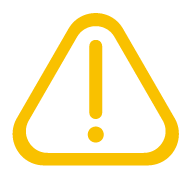Who can use this feature?
Users with the Patient Payment permission.
View how a patient payment was applied to any charges of payment plans.
Select Payment > View.
Fill in the option for Patient Payment.
Use the Patient field to locate the patient by entering the search criteria (e.g., Name, DOB, account #, member ID, or phone #) and click the Search button.
In the alternate Search field, enter the search criteria (e.g., check/ref. #, payment amount, etc.).
Optional: Include Additional Options in your search criteria, such as, Received Date, or Payment Type (Copay, Payment).
Click the Search button.
A Patient Payment window will open with a quick view of any payments made by the selected patient.
Place a check in the box next to the Patient Payment(s) that meet your criteria > Click Select.
 You can open up to 5 payments at a time.
You can open up to 5 payments at a time.The Payment from [Patient] tab(s) will display the payment information.
Clicking on the Patient's Name link will open up the patient’s record.
Clicking on the Details link will display more information on the payment.
Clicking on the Show Charges link will display the changes this payment was posted to.
Who can use this feature?
Users with the Insurance Payment permission.
View Insurance Payments gives you the ability to search for insurance checks and make any changes to a payment, in addition to committing a check so that no further changes can be made.
Select Payment > View.
Fill in the option for Insurance Payment.
In the Search field, enter your search criteria (e.g., check/ref. #, payment amount, etc.).
Optional: Include Additional Options in your search criteria, such as Payer, Received/Check Date, or Type (EOB, Payment).
Click the Search button.
Place a check in the box next to the Insurance Payment(s) that meet your criteria > Click Select.
 You can open up to 5 payments at a time.
You can open up to 5 payments at a time.The Payment from [Insurance] tab will display the payment(s) information at a glance (Check #, Payer, $ amount, applied vs. unapplied, Provider Adjustments (if applicable)).
 Note: Provider level adjustments will only be shown on the Insurance Payment screen and ERA screens if there are any provider level adjustments on the ERA (even if the total amount of the adjustments is $0.00).
Note: Provider level adjustments will only be shown on the Insurance Payment screen and ERA screens if there are any provider level adjustments on the ERA (even if the total amount of the adjustments is $0.00).Click the Edit link to make changes to the payment information
Use the Payment By option to change the payer associated with the payment.
 Changing this field will not update the patient's activity. The memo line will need to be manually changed under the Manage Account section.
Changing this field will not update the patient's activity. The memo line will need to be manually changed under the Manage Account section. Use the Payment From field to enter who the payment is from. This can be used for reporting purposes.
Use the Payment Amount field to change the amount of this payment.
Use the Received/Check Date option to change the date when the check was received.
Use the Check/EFT# field to change the check or EFT # associated with the payment.
Use the Other Ref # field to add any other notes or ref, can be used for reporting purposes.
Use the Source option to edit the payment type.
Click Save.
Add or Remove any claims to this payment.
Choose any of the options below to Add payments for:
Claim: Search for any other claim you would like to associate with this EOB.
Account Debit: This will search for debits.
Claims at <PAYER NAME>: This will search for claims that are currently at the payer the EOB is associated with.
Place a check the box in the Remove column to remove them from the EOB payment.
Click on the Payment Line to open the detailed payment information for the selected claim.
Use the Action drop-down menu to select an action for this payment.
Processed: Marks the payment as processed.
Processed and Forwarded: Marks the payment as processed. Also notes that the remaining balance should be forwarded to a Secondary or Tertiary Payer.
Denied: Marks the payment as denied.
Refund / Reversal: Marks the payment as a refund, typically used if the payer requests any payments back.
Reference our Refund / Reversal Help Article for step by step instructions.
Use the TCN drop-down menu to select the submission to a payer.
This controls which payer any Remark, Adjustment Reason or Unpaid Reason codes are from.
Note: If no TCN is found, you will be unable to add remittance information such as Remark, Adjustment, and Unpaid Reason codes.
Use the Claim Status drop-down menu to set the status for any claims associated with this payment.
Please Reference our Claim Status Field Descriptions for more information.
Enter the Allowed, Paid, Adjusted amounts based on your EOB.
Enter any Remark, Adjustment Reason, and Unpaid Reason codes based on your EOB.
 Reference our Remittance Codes Actions Help Article for steps on how to automate process based on the code used.
Reference our Remittance Codes Actions Help Article for steps on how to automate process based on the code used.Reference the Apply Discount, Apply Credit Adjustment, Apply Debit Adjustment, Apply Account Credit and Add Info Line Help Articles within the Manage Account screen for more information.
Click Save Payment. Otherwise, click Close.
 You can open up to 5 payments at a time.
You can open up to 5 payments at a time. Note: Provider level adjustments will only be shown on the Insurance Payment screen and ERA screens if there are any provider level adjustments on the ERA (even if the total amount of the adjustments is $0.00).
Note: Provider level adjustments will only be shown on the Insurance Payment screen and ERA screens if there are any provider level adjustments on the ERA (even if the total amount of the adjustments is $0.00). Reference our
Reference our